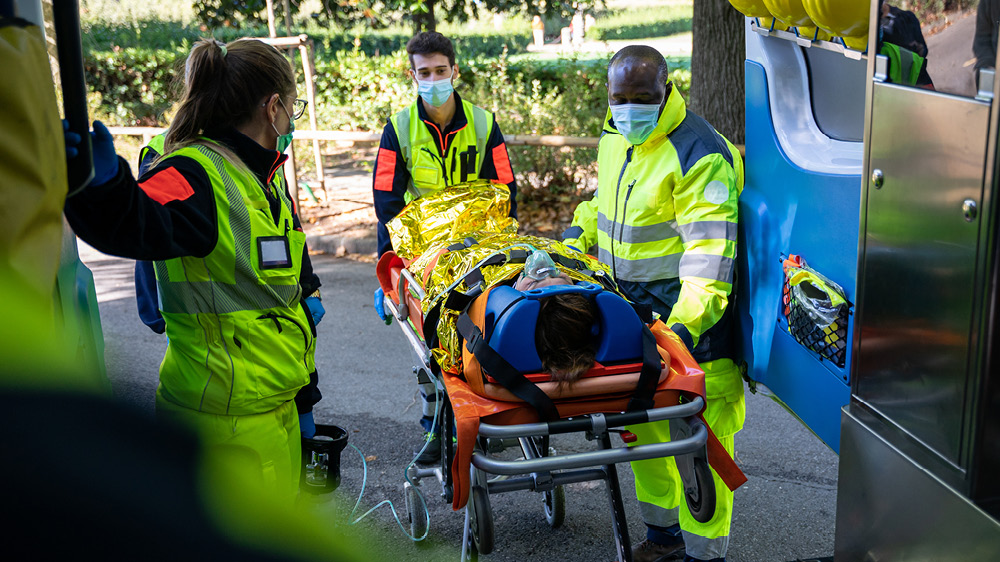Every year 350,000 Americans die from cardiac arrest, according to the American Heart Association. Cardiac arrest is a severe heart event. Ninety percent of people who have an out-of-hospital cardiac arrest die before they reach a medical center.
Learn what a cardiac arrest is, and why rapid response is crucial to increase your chance of survival.
What is cardiac arrest?
Cardiac arrest, often called sudden cardiac death, refers to a fatal abnormal heart rhythm known as ventricular fibrillation.
When your heart goes into this abnormal rhythm, the main pumping chambers of the heart quiver irregularly. This stops the heart muscle from pumping blood to the brain and the rest of your body.
Without blood flowing to your brain and organs, your body is impacted almost immediately.
Blood supply is critical to bring oxygen to your brain and other organs. Cardiac arrest stops blood flow and within several seconds you can collapse.
Risk factors for cardiac arrest
There are many factors that can increase your risk of cardiac arrest including:
Cardiomyopathy: a weakened or abnormal heart muscle.
Congenital abnormality of the heart arteries: an abnormal course of one or more of the heart arteries that can cause press the artery closed when it should be open, stopping blood to the heart.
Long QT syndromes: abnormalities of the microscopic heart electrical channels.
You can be born with heart abnormalities or develop them from specific medications. Talk with your primary care provider to know your risk.
Symptoms of cardiac arrest
Cardiac arrest can happen suddenly. Symptoms of an abnormal heart rhythm include:
- Racing heartbeat.
- Fluttering.
- Fainting or near fainting.
Cardiac arrest treatment and emergency procedures
Fast action is the key to survival and positive outcomes. Two procedures can save your life if you go into cardiac arrest: CPR and defibrillation.
CPR is an emergency lifesaving procedure performed when the heart stops beating. Defibrillation is a controlled electric shock, usually from an automatic external defibrillation (AED), that restores your heart to a normal rhythm.
Because of increased public training and awareness, survival rate of cardiac arrest has improved. AEDs are found in most public places and many people are trained in CPR.
Always call 911 as soon as possible.
Medical care after cardiac arrest
Once you are in a medical center, a full evaluation is needed including:
- Echocardiogram (heart ultrasound)
- Coronary angiogram (evaluation of heart arteries)
- Possible genetic testing
- Possible MRI
Cardiac arrest vs. heart attack
 A heart attack is a different condition, with different symptoms and treatments than cardiac arrest, although the two can be linked.
A heart attack is a different condition, with different symptoms and treatments than cardiac arrest, although the two can be linked.
Sometimes if a large area of the heart muscle is not getting enough blood flow because of a heart attack, you can go into cardiac arrest as a result.
A heart attack happens when a heart artery is blocked, which supplies blood to the heart muscle, causing damage.
Heart attack symptoms can appear days and even weeks prior to the actual attack, while many who experience cardiac arrest have little warning.


